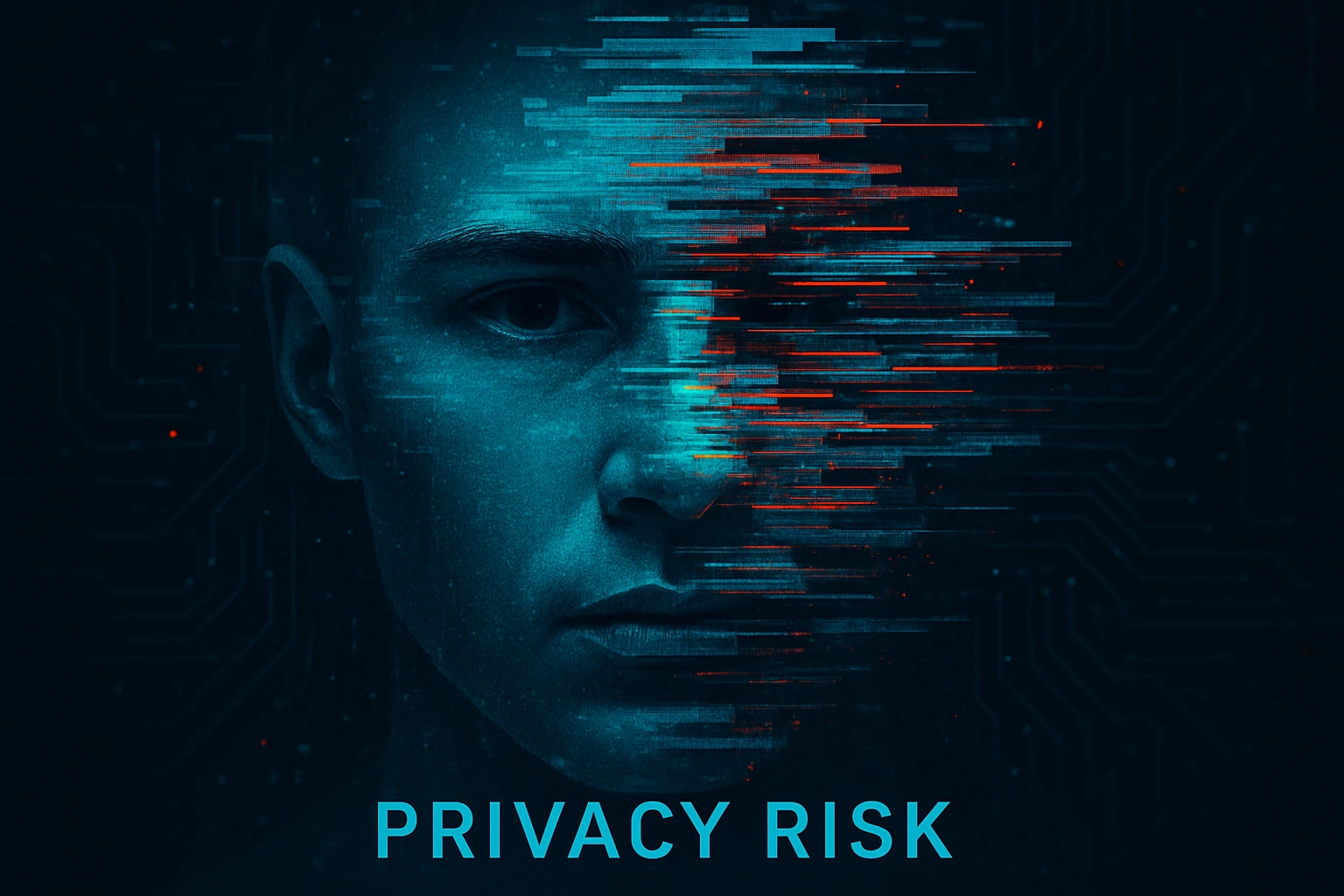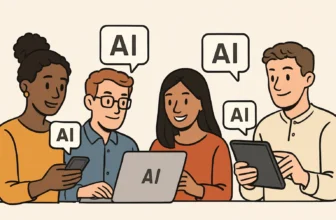
Are Deepfakes Putting Your Privacy at Risk?
Ever seen a video of someone famous saying something *wild*, only to find out it was completely fake? Here’s a stat to make your jaw drop: a report from cybersecurity firm Deeptrace found a 900% increase in AI deepfakes in just one year—and that was before generative AI went full throttle.
Yikes, right? The scary part is, it’s not just celebs or politicians getting deepfaked anymore. It’s average folks like you and me. With nothing but a photo and a few voice snippets, AI can create shockingly realistic videos that put *you* in situations you’ve never been in—saying things you’ve never said.
I remember panicking after seeing my cousin’s face plastered onto a video meme going viral on a prank site. It was meant to be funny, but it freaked him out—imagine if it had been faked into something damaging. That’s when it really hit me: our identities are more vulnerable than ever. And it’s not just about embarrassment. Deepfakes can mess with job opportunities, reputations, even your relationships.
So, What Can We Actually Do About It?
Okay, I know it sounds like we’re living in some dystopian Black Mirror episode, but don’t worry—there are **real steps** we can take right now to protect our privacy and stay ahead of these synthetic threats.
- Lock down your social media: Limit what you share. Photos, videos, and voice clips are gold mines for deepfake creators. Review privacy settings and clean up public-facing content.
- Use reverse image search tools: Tools like Google Reverse Image Search or TinEye let you monitor where your images pop up online. If something looks sketchy, you can report it fast.
- Get proactive with digital identity protection: Some newer apps and services monitor your online presence for identity misuse. Reclaim.ai, for example, uses AI to alert you if your images are being used suspiciously.
I’ve personally started watermarking photos before sharing them online—and it’s surprisingly easy. Even a subtle, invisible watermark can help show authenticity if a deepfake version of your photo emerges. Definitely worth doing for peace of mind.
The Future Is Wobbly, But We’re Not Helpless
Look, AI is incredible. But like any technology, it comes with risks—and deepfakes are one of the biggest privacy challenges of our time. That said, we’re not powerless. By being alert and taking a few protective steps, we can guard our digital selves just like we lock our doors at night.
Ready to learn how to fight back against deepfakes? Good, because in the next sections, we’re getting into the nitty-gritty of *how* and *why* these fakes are made—and how to stay one step ahead.
Let’s do this.
The Real Threat of Deepfakes to Privacy
Did you know that over 85% of deepfake videos online are used to create non-consensual explicit content? I know—that stat hit me like a punch to the gut when I first read it. It’s not just creepy. It’s an invasion of privacy on a level that feels straight out of a sci-fi nightmare, except… it’s real. And it’s happening right now.
Deepfakes—those eerily convincing videos where faces are swapped or voices mimicked—aren’t just cool tech tricks anymore. They’re becoming weapons, stealing not just our likeness but our narratives. Imagine waking up one day to find a fake video of yourself floating online, doing or saying something you never did. It’s not just humiliating—it’s utterly disempowering.
So, what’s the real damage here?
Let’s break it down. Aside from the obvious invasion of privacy, being “deepfaked” can completely shatter a person’s sense of control over their identity. It messes with your public image, job prospects, relationships—you name it.
There’s also something deeply psychological about it. I spoke with a friend who was targeted with a manipulated video that subtly altered the audio of something she said during a work presentation. It made her sound rude and unprofessional—totally not her. Even though it was cleared up eventually, she told me the damage to her confidence and relationships at work lingered for months. No one ever looked at her quite the same way again.
And here’s a harsher story that’s becoming all too common: I recently read about a university student who had her face digitally inserted into explicit content. She had no idea until someone sleazily shared the link in a group chat. It turned her life upside down. The emotional trauma, rumors, social isolation—it’s devastating. And scarily easy to do with just a few apps and a cropped selfie.
How can we protect ourselves?
Getting ahead of deepfakes starts with awareness. You don’t need to be in tech to fight back. Here’s how you can stay safer and smarter:
- Stay skeptical of videos—even if they seem real. Blurred edges, inconsistent lighting, or unnatural-looking eyes are red flags. If something feels off, trust your gut.
- Use reverse image search tools. If you see a suspicious clip or photo of yourself (or someone you know), tools like Google Reverse Image Search or TinEye might help trace its origin.
- Report and protect. Platforms like YouTube, TikTok, and Twitter now offer ways to report manipulated media. Don’t hesitate. And if you’re the victim, document everything and reach out to a legal or digital rights expert.
We’re not powerless—promise.
It’s tempting to feel like we’re just sitting ducks in a world of AI-generated madness, but we’re not. The more we understand how deepfakes work, and the faster we act when something feels wrong, the harder it is for bad actors to get away with it. And honestly, just talking about it—like we’re doing now—is a big first step. So share what you know.
Because privacy isn’t a luxury—it’s a right. And the more of us who believe that, the harder it gets for fake to override the truth.
Protecting Personal Data in a Deepfake World
Did you know? According to a recent report, over 90% of deepfakes use publicly available images or videos to craft fake content—often without the subject even knowing it.
Terrifying, right? We’re talking about your face cropped from an old college Facebook album, layered with voice samples lifted from your TikToks, mashed up into a deepfake saying things you’ve never said. That’s not sci-fi, friend—that’s now.
And the scary part? The raw ingredients for these digital Frankensteins start with something we often overlook: our personal data. That innocent selfie, the birthday post, your location check-in at brunch last Saturday—they’re the breadcrumbs deepfake creators follow right to you.
So, what can you do to protect your digital self?
Relax, you don’t have to become a cybersecurity expert overnight. But a few smart moves? They can go a long way.
- Audit your online presence: Google yourself. I mean it—see what’s floating around. You might be surprised by how much is public. Find old accounts, forums, even comments under your YouTube subscriptions? Consider deleting or locking those down.
- Lock up your data with encryption: If you’re working with sensitive files or personal communications, tools like ProtonMail for emails and Signal for messages make it super easy (and free!) to keep your data just for your eyes.
- Put the brakes on oversharing: I get it, sometimes you just wanna post. But try small shifts, like turning off location tagging, or waiting to post that vacay photo *after* you’re home. Tiny habits, big privacy wins.
Let’s talk tools—because we love a good productivity boost
I’ve personally used Bitwarden, a free password manager, to tighten up my digital spaces. No more recycled logins from my AIM days (don’t judge). And if you’re looking to encrypt files on your computer? VeraCrypt is a rock-solid option. It’s free, open-source, and way easier than it sounds.
Also, browser extensions like Privacy Badger (from the EFF) can help stop trackers from creating a personal ad profile based on your clicks and scrolls.
Practice mindful data minimization
Know that feeling when you walk into a store and they ask for your email…your phone number…your blood type (okay, maybe not that last one)? You don’t have to give it all away. Here’s what works:
- Use burner emails (I like 10 Minute Mail) for one-time downloads or signups.
- Know what apps can access. Every once in a while, skim through app permissions. Why does that puzzle app need my microphone anyway?
- Be a little mysterious online. Not everything needs to be public. Private your accounts. Trim your bio. Let a little mystery work in your favor.
Final thought: You’re more powerful than you think
The digital world can feel overwhelming, especially with threats like deepfakes looming around every corner. But here’s the truth—you don’t need to vanish to stay safe. Just get smart, be intentional, and take control piece by piece.
Because the more we protect our own data, the harder we make it for bad actors to create convincing lies—and the closer we all get to a safer, saner internet.
Stay savvy and don’t let them clone your vibe.
Leveraging AI to Combat Deepfakes
Did you know deepfake videos are doubling *every six months*? Yep, it’s not just celebrity faces swapped into movies anymore—it’s your coworker’s voice in a voicemail they never left, or your own face in a social media post you didn’t make. Creepy, right?
I totally get that pit-in-your-stomach feeling when you realize how real these digital forgeries can look. I’ve had friends show me deepfakes that were so convincing I legit questioned reality for a second. But here’s the good news: the same tech that creates deepfakes? Yeah—it’s also being trained to hunt them down.
AI vs. AI: The Digital Showdown
Think of it like this: Artificial Intelligence made the mess, and it’s also cleaning it up. AIs trained to spot deepfakes examine micro-expressions (like slight eye twitching), inconsistencies in shadows, and even audio mismatches. One tool I tried, Microsoft’s Video Authenticator, analyzes pixels frame by frame to detect unnatural edits. It’s wild—but in a good way!
And you’re not alone in this. Companies like Deeptrace (now Sensity AI) and Reality Defender are building super-smart systems to flag and block deepfakes before they go viral. Facebook, Google, and Twitter have also begun rolling out AI-powered detection to protect users. It’s basically an arms race—but with nerds coding on keyboards instead of swinging swords. 🥷💻
Real Wins in a Fake World
Let me share a quick success story that seriously gave me hope. During a recent election in Europe, researchers flagged a deepfake audio clip of a candidate saying some outrageous stuff. Within hours—yes, hours—AI surveillance tools identified the distortion patterns and traced it to a fabricated source. The story got shut down before it could pick up steam. That’s the kind of real-world impact we’re starting to see, and it’s proof positive that AI isn’t just a buzzword—it’s a privacy bodyguard.
What *You* Can Do Right Now
Okay, so you’re probably thinking: “Cool, but what can *I* actually use?” Glad you asked, because it’s not just for techies anymore. Here are a few tools and tricks to keep in your digital toolkit:
- Use Deepware Scanner: A free app that lets you upload audio or video files to screen for signs of manipulation.
- Plug into Project Origin: This initiative works on content certification, meaning you’ll eventually get watermarked proof a video is legit. Keep an eye out for apps using this tech soon.
- Stay sharp with Sensity AI’s Browser Plugin: It alerts you in real time if you’re viewing potentially deepfaked content. Like a radar for fake news!
Bonus tip: If something feels off—like a weird blink pattern or emotionless eyes—pause before sharing it. Trust your gut, then let the tools do the fact-checking.
Hope, Powered by Tech
Look, deepfakes are scary stuff. But knowing there’s a digital fortress being built by smart people (and smarter AIs) brings me a little peace. And we’re not powerless here. The tech to fight back is becoming more user-friendly and accessible every day. Start small. Stay curious. And know that for every new deepfake out there, there’s a truth-seeking AI learning how to call its bluff.
Let’s keep being the humans in this AI-heavy world—because empathy, intention, and community? That’s something no deepfake can replicate.
Building a Future Resilient to Deepfakes
Did you know that nearly half of internet users can’t tell the difference between a real video and a deepfake? Wild, right? It’s one of those scary stats that doesn’t just stay in your head—it gets under your skin. We’re living in a time where seeing is no longer believing. And if that doesn’t make you want to up your digital street smarts, I don’t know what will.
Look, I get it—most of us didn’t grow up needing to worry about AI-generated fakes. Catfishing, yes. Photoshop disasters, sure. But videos of your favorite celebrity saying something they never said, or political candidates spewing hate they never spoke? That’s a whole new level of digital deception. And the truth is, if we’re not actively building our digital literacy muscles, we’re sitting ducks.
It Starts With Knowing What to Look For
I remember watching a “news” clip that looked off. The mouth and words didn’t quite sync up, and the lighting was weird—like he was both in an office and a basement? Red flags started waving. That was the day I did a deep dive into spotting deepfakes, and trust me, once you learn the signs, you can’t unsee them.
Things like:
- Weird eye movement – Deepfakes often have shifty, unnatural blinks.
- Inconsistent lighting or skin tones – Like someone copy-pasted a face onto a body with mismatched makeup.
- Audio lag or robotic tone – A total giveaway that something shady’s going on.
So, Where Do We Learn This Stuff?
Thankfully, you don’t need a computer science degree to get up to speed. There are amazing, legit resources out there for any age or background. A few of my faves:
- MediaWise from The Poynter Institute – They’ve got TikToks, YouTube explainers, and even a course for seniors. Super digestible.
- Common Sense Media – Fantastic for families and educators. They break down complex concepts in real-world ways.
- Sift by the News Literacy Project – Weekly newsletter that dissects trending misinformation and shows you how to spot it. Super eye-opening.
Proof That Digital Literacy Works
One cool example? In Finland (of all places!), they rolled out nationwide media literacy training as early as school age. Pretty clever, right? Turns out—it worked. Finland now ranks #1 in media literacy globally, and they’ve significantly reduced the impact of fake news and deepfakes. Makes you think: what if every country did this?
What You Can Do—Right Now
Feeling fired up? Good. Because even small steps can create ripple effects. Here’s what we can all do to build a deepfake-resilient future:
- Take a digital literacy course – Just an hour a week can make you (and your group chats) smarter.
- Share fact-checking tools – Turn skeptical friends into mini investigators. Tools like InVID, FactCheck.org, or Chrome extensions that flag misinformation.
- Talk about it – Seriously, just bringing up deepfakes at dinner can spark oh-so-needed awareness. Let’s normalize being digital detectives.
Friend to friend—we can’t afford to ignore this. Deepfakes aren’t going away, but ignorance doesn’t have to be our default. By getting educated and spreading the word, we become part of the solution. And honestly? That kind of power feels pretty amazing.
Let’s outsmart the fakes—together.
Stay Vigilant, Stay Safe: Your Privacy Matters
Did you know that deepfake videos are doubling in number every six months? Yeah, it shocked me too. What started as a tech curiosity is now becoming a full-blown privacy threat. And here’s the scariest part — the tech keeps getting better. It’s not just celebrities or politicians being targeted anymore. It could be you, me, our parents, or our kids.
I remember the first time I came across a deepfake of a friend — someone had stolen their Instagram video and used AI to morph it into something… well, let’s say, very not-them. Totally shook me. It wasn’t just creepy; it felt like a total violation. And the worst part? Most people don’t even know this can happen, let alone what to do if it does.
But here’s the good news: you don’t have to figure it all out alone. Let’s talk about some ways we can protect ourselves and each other in this wild digital world.
Quick Steps to Protect Your Digital Identity from Deepfakes
- Lock down your content: Review your social media privacy settings. Who can see your videos? Who can download them? The fewer hands your content ends up in, the better.
- Use reverse image and video search tools: Tools like InVID or Google’s reverse image search can help you detect if your face or content is showing up in places it shouldn’t.
- Watermark your content: If you’re a content creator, watermarking your videos adds a layer of protection and gives people another signal that your media is authentic.
Think of it like putting a lock on your digital front door. Sure, it’s not foolproof — but it makes it harder for someone to come waltzing in and mess with your reality.
Let’s Do This — Together
You’re not alone in this. The more we talk about deepfakes and digital privacy, the harder it becomes for the bad actors to hide in the shadows. So start spreading the word — share what you’ve learned today with a friend (especially the less techy ones!).
And ask yourself this: What’s one small step you can take today to protect your digital identity? Maybe it’s tightening your privacy settings. Or checking to see where your image appears online. Heck, maybe it’s just bookmarking this blog so you can come back to it later.
Whatever it is, know this — there’s power in awareness. There’s strength in community. And even in a digital age filled with smoke and mirrors, you can choose how your story is told.
So stay curious. Stay guarded. And above all, stay kind — because teaching someone else about this could be the thing that saves them from a privacy nightmare down the road.












